Update: 1/25/2021 | How to Propagate Plants
If you’ve got a green thumb and want to add a new skill to your arsenal, plant propagation can be a rewarding way to expand your indoor jungle.
Plant propagation is very interesting to watch. It’s also a great way to save money when adding indoor plants to your home.
And what is really exciting is that you can potentially get new plants into your home for free or at a low-cost through a water propagation method.
We prefer the water propagation method because it’s a great way to get the exact replica of a plant without much effort. All that is required is some time and your attention.
Below we’ll go over how to propagate and what you need in order to do it successfully.
What Does It Mean to Propagate a Plant?
Plant propagation is the process of growing new plants from a variety of sources. These sources include seeds, cuttings, and other plant parts (Wikipedia).
Why Do People Propagate Plants?
There are two reasons, 1) to get new plants for free or for a low-cost, and 2) to trim house plants that are overgrown and cluttering your home.
How to Propagate Plants
While there are many ways to propagate plants, in this guide we’ll show you how to water propagate.
What Do I Need to Propagate Plants?
- Propagation soil, or a mix of potting soil, vermiculite (helps keep the soil moist), and perlite (prevents compaction).
- Propagation chamber – clear container & lid, deep enough for tall seedlings. We love using mason jars.
- Sharp clippers, knife or razor blade
- Rooting hormone – speeds up the rooting process and protects from disease
- Small pots for rooted cuttings
Get Root Cuttings of Your Desired Plant
To propagate your plant, you need to get a root cutting. You can get a root cutting by purchasing them online or by swapping with other plant enthusiasts. There are tons of plant groups on Facebook where you can buy or trade for different plants.
You can also find plants along the sidewalk, in a park, or anywhere you are allowed to cut and bring plant trimmings home with you.
Root cuttings have nodes, which are where the stems will grow from during propagation.
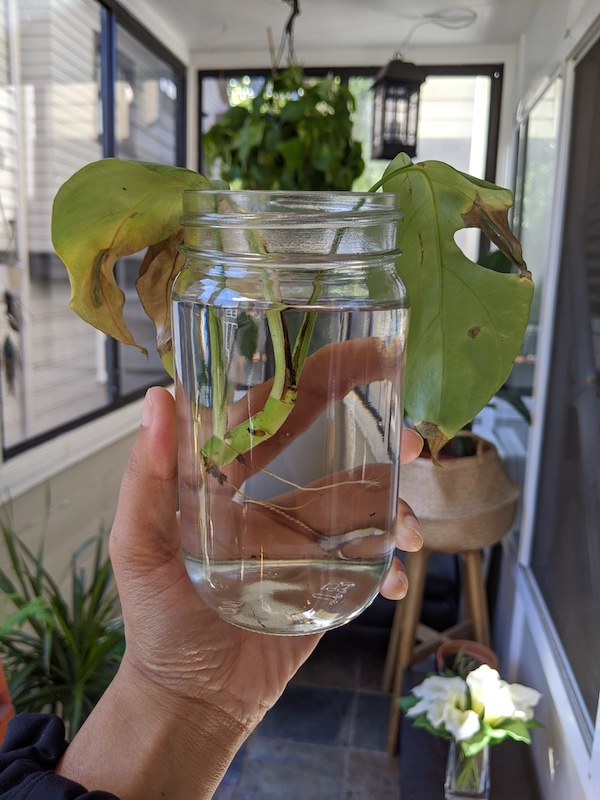
Day 1 of Rhaphidophora Tetrasperma (AKA Mini Monstera) Propagation
Add Your Plant to Water
Using a propagation medium, such as a mason jar, water bottle, vase or even these cute beakers, add water until the vessel is 4/5 full. Add the plant and make sure the nodes are submerged. Do not submerge any of the leaves. If leaves happen to become submerged due to length, cut the leaves off with scissors or a blade.
The next part is to wait. It will take weeks, maybe even months before you see roots start to grow.
If your plant is struggling with root formation, you can always encourage it with some root hormone powder. Simply sprinkle it onto the roots, shake off any excess and add it back to the propagation vessel.
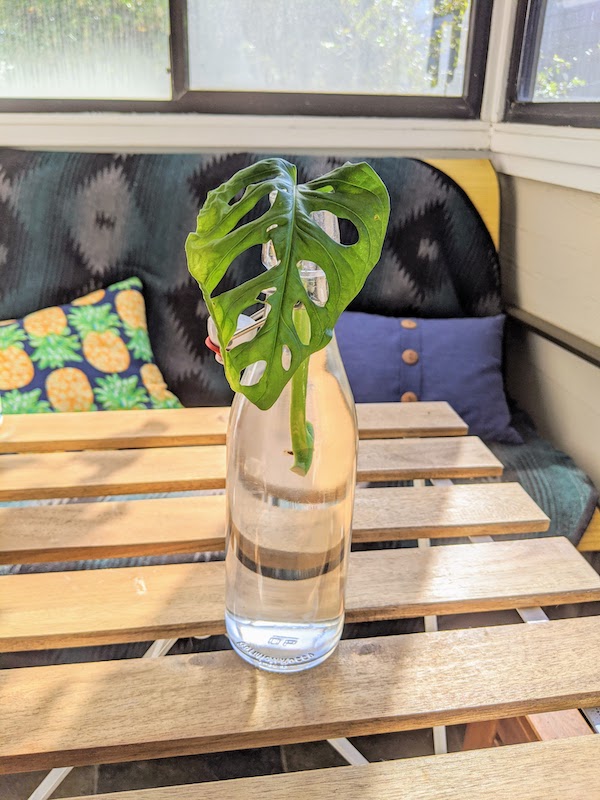
Day 1 of Monstera Adansonii Propagation
How Long Does It Take Roots to Form?
It can take anywhere from 1 to 4 weeks for roots to fully form. On average, we typically get roots long enough for potting at around 3-4 weeks.
You do not want your roots to be too long because it could be detrimental to the long term wellbeing of the plant. Why? Because water has no nutrients and it can damage the plant in the long run.
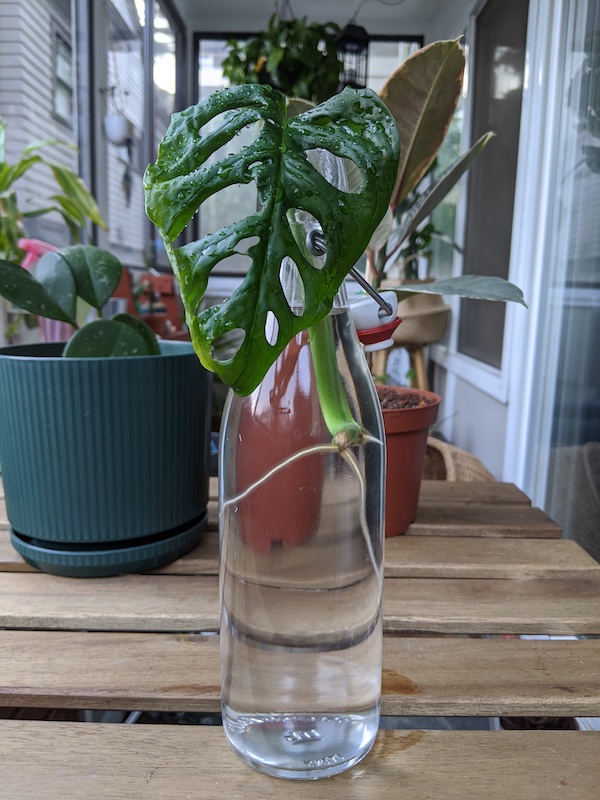
Week 3 of Monstera Adansonii Propagation
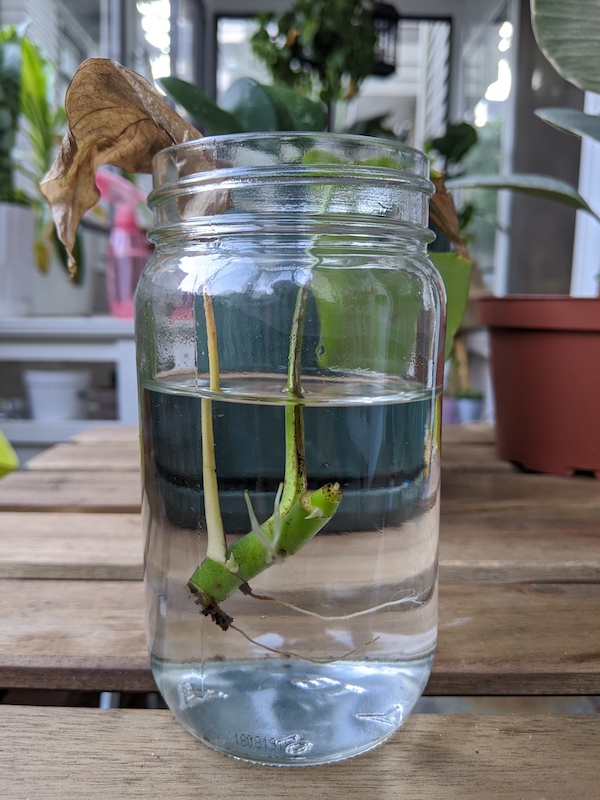
1 week propagation of Rhaphidophora Tetrasperma (AKA Mini Monstera)
At week 1 of propagation, I could see 3/4″ stems forming on my Mini Monstera cutting.
When Should I Pot My Propagated Plant?
You should pot your propagated plant when the stem is 1-2 inches long. I typically wait until the stem is 2″ long and there are at least two stems to support the plant when potted.
You can continue to leave the plant in water until the stems start to coil. We typically recommend not letting it get too long to preserve the health of the plant.
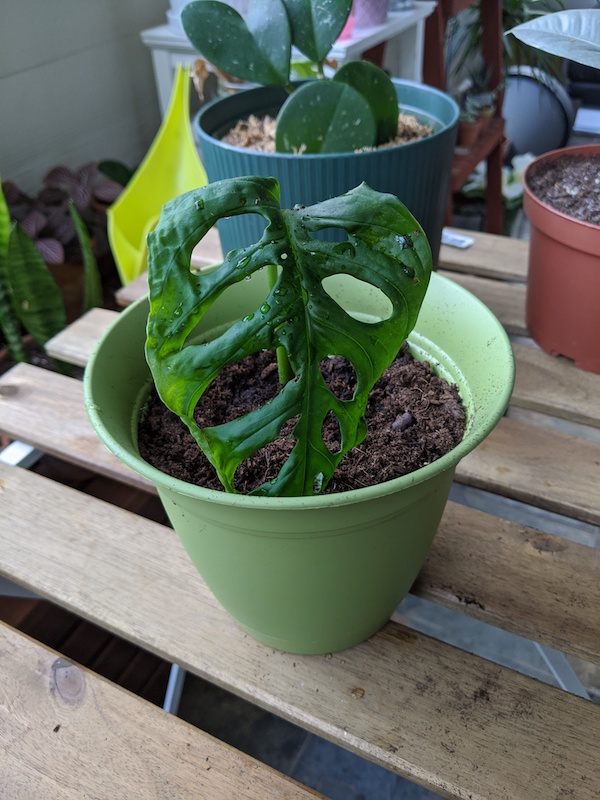
Potted Monstera Adansonii after propagation
When Will My Propagated Plants Grow New Leaves?
This depends on a few conditions; current weather conditions, soil, type of plant, etc.
When I initially potted my plants, the leaves started to brown. I thought my plants were going to die and all the money and time I spent propagating went down the drain.
I kept my plant soil moist (but not damp) and moved my plants near a humidifier 24/7. One month after potting, I finally saw some new growth! See the images below for new leaves from my propagated plants.
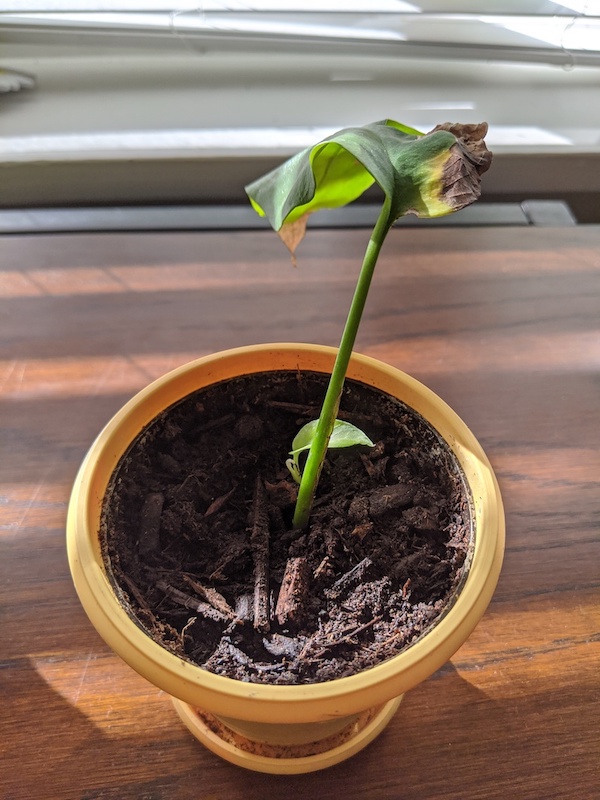
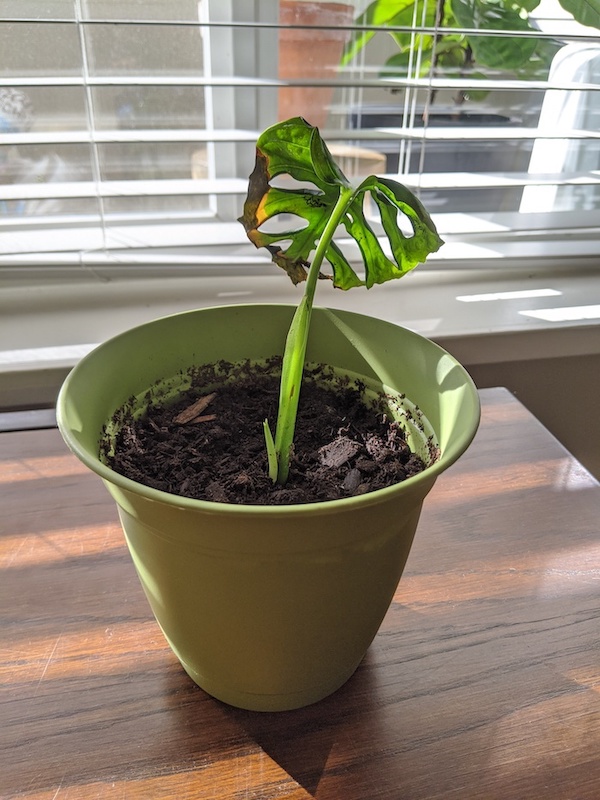
What Soil Should I Use?
You should use a soilless potting mix to start and slowly add soil with each watering. Why? Because the soilless potting mix will allow the roots to breathe as the plant grows. This will also prevent root rot.
We like using this soilless mix recipe post propagation:
- 4 to 6 parts sphagnum peat moss or coir (coconut shards)
- 1 part perlite (small white stones)
- 1 part vermiculite
With each water, add a bit of soil so that it permeates through the soilless soil over time.
Final Thoughts
Propagation takes time, attention and patience. It’s a great way to get new plants that would have been too expensive to buy fully grown. And the results of your hard work will pay off in the end when you start to see new growth.
If you have any questions about propagation or how to care for your plants, feel free to send us an email.
Did you find our guide on how to propagate plants helpful? Please share it on Pinterest!
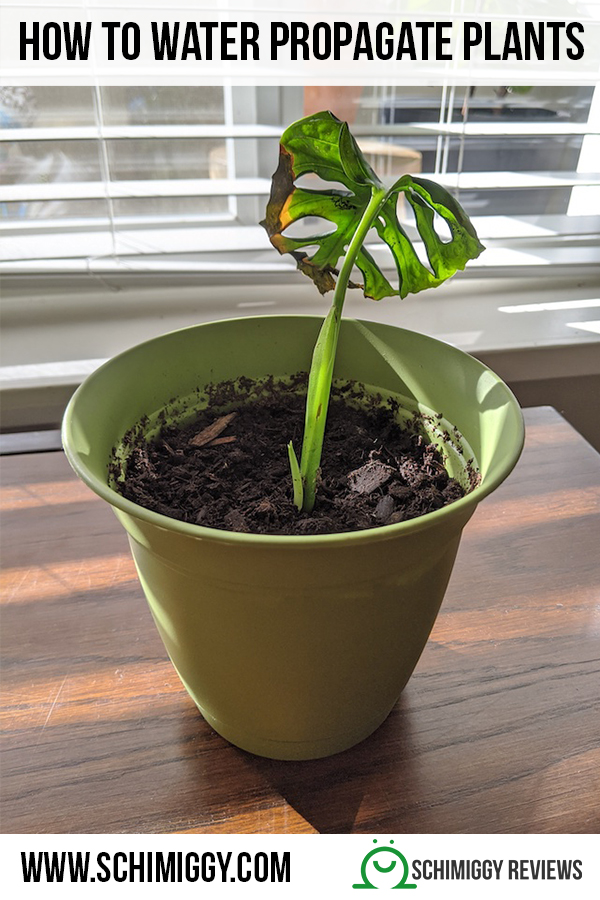
Thank you for visiting today! If you found this encouraging or informative, please connect with us on Instagram or TikTok. Sign up for our monthly newsletter for updates and more. We promise we won't spam you! Feel free to unsubscribe anytime. If you're a brand and want to work with us, please visit this page to get in touch.


